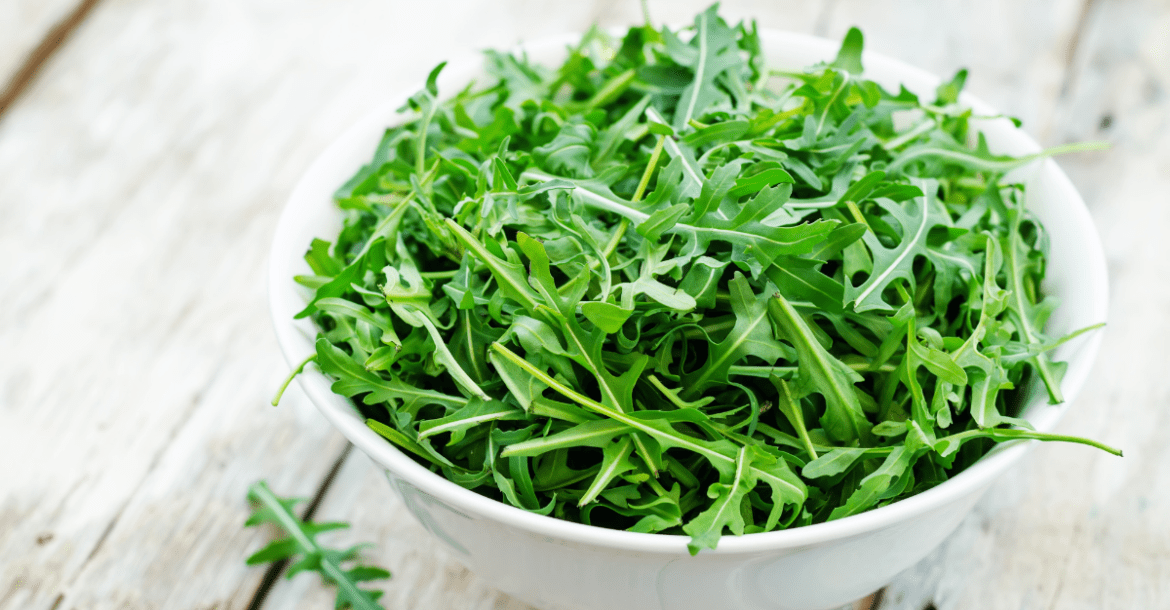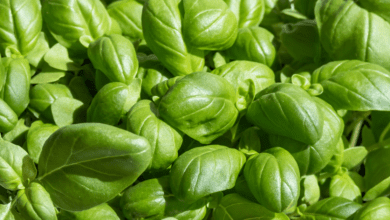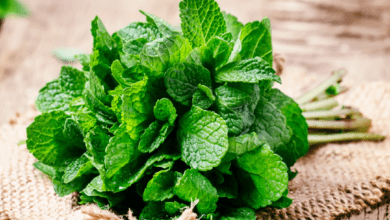
Arugula, also known as rocket or salad rocket, is a leafy green vegetable that adds a peppery and slightly nutty flavor to your salads and dishes. Not only is arugula delicious, but it is also packed with essential nutrients that can benefit your health. This versatile and easy-to-grow plant is a perfect addition to any backyard garden.
Arugula is an excellent source of vitamins A, C, and K, as well as folate and calcium. It is low in calories and high in fiber, making it a great choice for those looking to maintain a healthy weight or improve their digestive health. Additionally, arugula contains compounds called glucosinolates, which have been shown to have anti-inflammatory and anticancer properties.
Understanding the arugula plant
Arugula belongs to the Brassicaceae family, which includes other cruciferous vegetables like broccoli and kale. It has a rosette-like growth habit, with dark green leaves that are deeply lobed and elongated. Arugula plants can reach a height of 8 to 12 inches and produce small white flowers when they bolt. The leaves are the edible part of the plant and can be harvested throughout the growing season.
Arugula is a cool-season crop, meaning it thrives in cooler temperatures between 45°F and 75°F. It is more tolerant of cold weather than other leafy greens, making it an excellent choice for early spring or fall plantings. However, arugula can also be grown during the summer months with proper care and attention.
Choosing the right location and soil for growing arugula
For optimal growth and yield, arugula requires a location that receives at least 4 to 6 hours of direct sunlight per day. Choose a spot in your backyard that is not shaded by trees or other structures. Arugula prefers well-drained soil with a pH level between 6.0 and 7.0. If your soil is heavy or clay-like, consider amending it with organic matter like compost or well-rotted manure to improve drainage and fertility.
Before planting, it is essential to prepare the soil by removing any weeds or debris. Loosen the soil with a garden fork or tiller to a depth of 8 to 10 inches. This will help improve aeration and root penetration. If your soil is compacted, consider incorporating some coarse sand or perlite to improve its structure.
Also read: From Superfood to Exotic Delicacy: Unraveling the Health Benefits of Durian
Planting arugula seeds or seedlings
Arugula can be grown from either seeds or seedlings, depending on your preference and the time you have available. If you choose to start from seeds, sow them directly into the prepared soil about ½ inch deep and 1 inch apart. Water the area gently to ensure the seeds are adequately moistened but not waterlogged.
If you opt for seedlings, you can purchase them from a local nursery or start your own indoors. To start seedlings indoors, sow the seeds in a seed tray or individual pots filled with seed-starting mix. Keep the soil consistently moist and provide sufficient light for the seedlings to grow. Transplant the seedlings into the garden when they have developed a few true leaves and the soil temperature is above 40°F.
Proper watering and fertilizing techniques for arugula
Arugula plants have shallow root systems and require regular watering to keep the soil evenly moist. Water deeply at least once a week, providing approximately 1 inch of water. However, be cautious not to overwater, as excessive moisture can lead to root rot and other diseases. Monitor the soil moisture level by inserting your finger into the soil up to the first knuckle. If it feels dry, it’s time to water.
In terms of fertilization, arugula is not a heavy feeder and can thrive in moderately fertile soil. Before planting, incorporate a balanced organic fertilizer into the soil according to the package instructions. This will provide the necessary nutrients for healthy growth. Additionally, periodic side-dressing with compost or a slow-release organic fertilizer can help maintain the plant’s vigor throughout the growing season.
Managing pests and diseases in arugula plants

Arugula is generally resistant to most pests and diseases. However, it can still be susceptible to some common garden pests like aphids, flea beetles, and slugs. To deter these pests, consider using companion planting techniques. Arugula is known to repel flea beetles when grown alongside herbs like dill or basil. You can also use row covers or organic pest control methods like neem oil or insecticidal soap to keep pests at bay.
As for diseases, arugula can be prone to fungal infections like powdery mildew or downy mildew. To prevent these diseases, ensure proper air circulation by spacing the plants adequately. Avoid overhead watering, as moisture on the leaves can promote fungal growth. If necessary, apply organic fungicides according to the product instructions.
Also read: The Incredible Health Benefits of Broccoli: A Nutrient Powerhouse
Harvesting arugula leaves at the right time
Arugula leaves can be harvested when they reach a length of 4 to 6 inches. Younger leaves tend to have a milder flavor, while older leaves have a stronger and more peppery taste. To harvest, simply cut the leaves off at the base using a pair of sharp scissors or garden shears. Leave a few outer leaves intact to allow the plant to continue growing and produce more foliage.
Regular harvesting promotes continuous leaf production and prevents the plant from bolting too quickly. However, if you prefer to harvest the entire plant at once, you can do so by cutting it off at the soil level. Just make sure to replant or sow new seeds for a continuous supply of fresh arugula.
Storing and using harvested arugula
Freshly harvested arugula can be stored in the refrigerator for up to a week. Before storing, wash the leaves thoroughly to remove any dirt or debris. Gently pat them dry with a clean kitchen towel or use a salad spinner to remove excess moisture. Place the leaves in a sealable bag or container lined with paper towels to absorb any remaining moisture.
Arugula leaves are versatile and can be used in a variety of dishes. They make a delightful addition to salads, sandwiches, and wraps. You can also sauté or wilt the leaves for a warm side dish or incorporate them into pesto or pasta sauces for an extra burst of flavor. Get creative with your culinary adventures and enjoy the fresh and vibrant taste of homegrown arugula.
Common mistakes to avoid when growing arugula
While arugula is a relatively easy plant to grow, there are some common mistakes that beginners should avoid. One mistake is overcrowding the plants. Arugula needs space for air circulation, so be sure to give each plant enough room to grow and spread out.
Another mistake is neglecting to thin the arugula seedlings. If the seedlings are too close together, they will compete for nutrients and sunlight, resulting in stunted growth. Thin the seedlings to allow proper spacing and promote healthy development.
Finally, avoid letting the arugula plants bolt and go to seed too quickly. Bolting occurs when the plant starts producing flowers and seeds, signaling the end of its leaf production stage. To prevent bolting, harvest the leaves regularly and keep the plants well-watered during hot weather.
Conclusion and final tips for successful arugula cultivation
Growing and harvesting arugula in your own backyard can be a rewarding experience. By following the right techniques and providing the necessary care, you can enjoy a bountiful harvest of this flavorful leafy green. Remember to choose the right location and soil, plant the seeds or seedlings at the appropriate time, and water and fertilize your plants adequately. Keep an eye out for pests and diseases, and harvest the leaves at the right time for maximum flavor.
Now that you have learned the basics of growing and harvesting arugula, it’s time to start incorporating this nutritious plant into your meals. Experiment with different recipes and enjoy the fresh and vibrant taste of homegrown arugula. Whether in salads, sandwiches, or cooked dishes, arugula’s peppery kick will elevate your culinary creations to a whole new level. So, roll up your sleeves, grab your gardening tools, and embark on a journey to grow and savor your very own arugula from seed to salad. Happy gardening and bon appétit!






